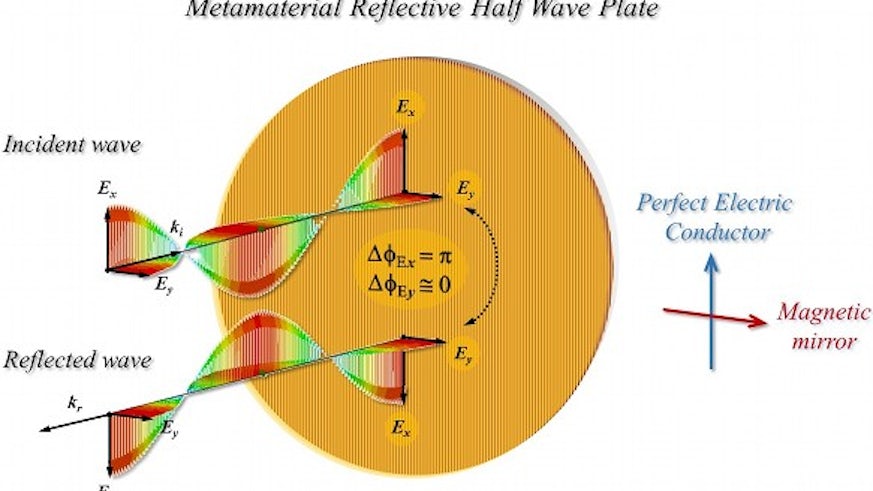New metamaterial device may help detect B-Mode polarization from the CMB
21 December 2016

Researchers at the School of Physics and Astronomy have developed a device which may help to discover more about gravitational waves which were emitted when the universe was first formed.
This work is part of a multi-partner collaboration funded by the European Space Agency's Technology Research Programme which aims to develop technologies which will be used to support future satellite missions to discover more about cosmic microwave background originating from the formation of the universe.
The innovative research undertaken by the Astronomy Instrumentation Group at Cardiff University has contributed hardware to many projects worldwide and one of its primary activities is the design, manufacture, test and deployment of quasi-optical components based on metamaterials. They have developed a device called an Embedded Reflective Half-Wave Plate based on metamaterials which can operate over extremely large bandwidths; a requirement which is necessary to allow the spectral removal of astronomical foregrounds.
A recent paper, “Multi-Octave Metamaterial Reflective Half-Wave Plate for Millimetre and Sub-Millimetre wave Applications,”[1] published in the Optical Society Journal, Applied Optics, describes the research behind the device.
The device, based on a magnetic mirror, could be used to detect B-mode, a component of cosmic microwave background that has been the focus of much investigation over recent years. It is thought that the B-mode component of cosmic background radiation may be the key to discovering more about primordial gravitational waves and the processes involved in the formation of the universe.
This new device may help to overcome one of the major challenges involved in detecting the B-mode polarization as it can modulate microwave polarization across a broad frequency range. In order to detect the B-mode polarization from the foreground radiation of other astrophysical sources, it is necessary to operate over a large microwave frequency range.
“Metamaterials enabled us to invent a material with the characteristics we needed:” said Dr Giampaolo Pisano. “Because the approach we used is new, it allowed us to overcome the frequency range limits that other researchers have faced.”
Although the Astronomy Instrumentation Group has contributed many polarization modulators based on birefringent and metamaterials operating at millimetre wavelengths this current development represents a significant technology step in this field. The operational principles of the device uses the different reflective properties of a perfect electrical and magnetic surfaces, the former being reflection from a normal metal surface and the latter being a surface which can only be created with metamaterials (they do not occur naturally).
This new device greatly enhances the performance and makes manufacture of large components a real possibility. The performance of this device has could provide a real step forward for ground-based Cosmic Microwave Background (CMB) instruments as well as for use in future satellite missions.
“Now that we’ve demonstrated the concept, we need to perform space qualification tests to demonstrate its ruggedness for a satellite launch,” said Dr Pisano. “We also need to deploy it in ground-based B-mode detection instruments to demonstrate its usability in the field.”
The novel device was conceived of by Dr Pisano and manufactured within the AIG cleanrooms, managed by Prof Carole Tucker, and tested within the AIG RF laboratory, managed by Prof Peter Ade.
[1] Paper: G. Pisano, B. Maffei, P.A.R. Ade, P. de Bernardis, P. de Maagt, B. Ellison, M. Henry, M.W. Ng, B. Schortt, C. Tucker, “Multi-Octave Metamaterial Reflective Half-Wave Plate for Millimetre and Sub-Millimetre wave Applications,” Applied Optics Vol. 55, Issue 36, pp. 10255-10262 (2016) (DOI: 10.1364/AO.55.010255).